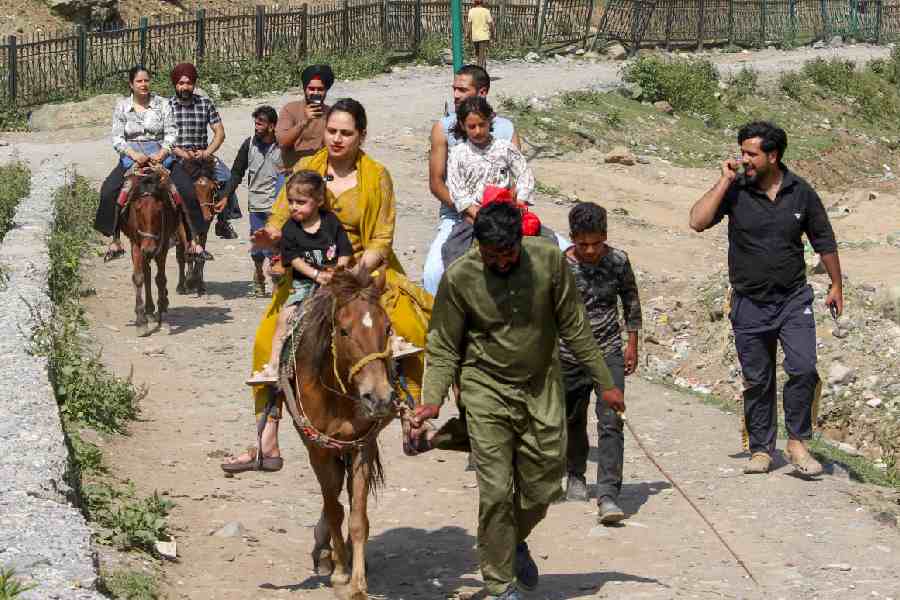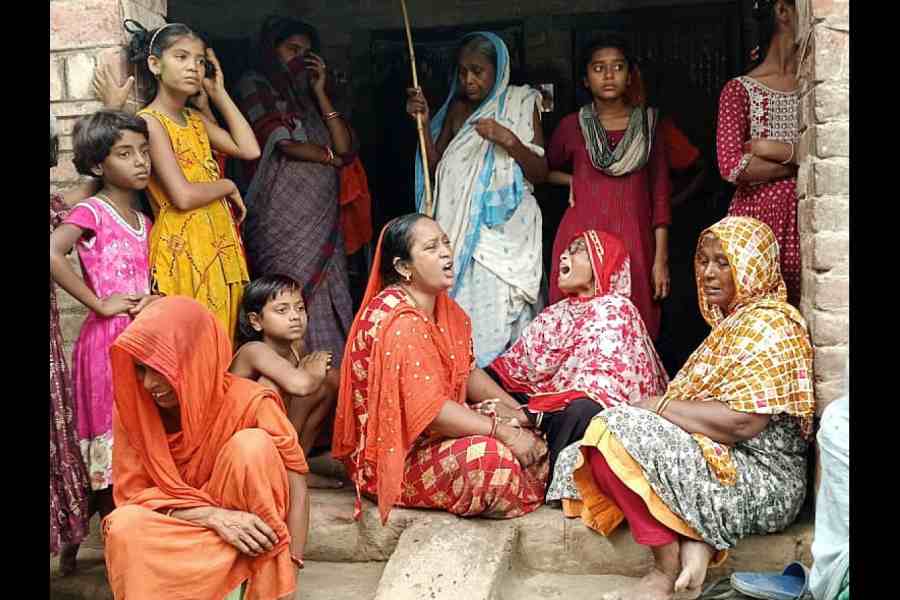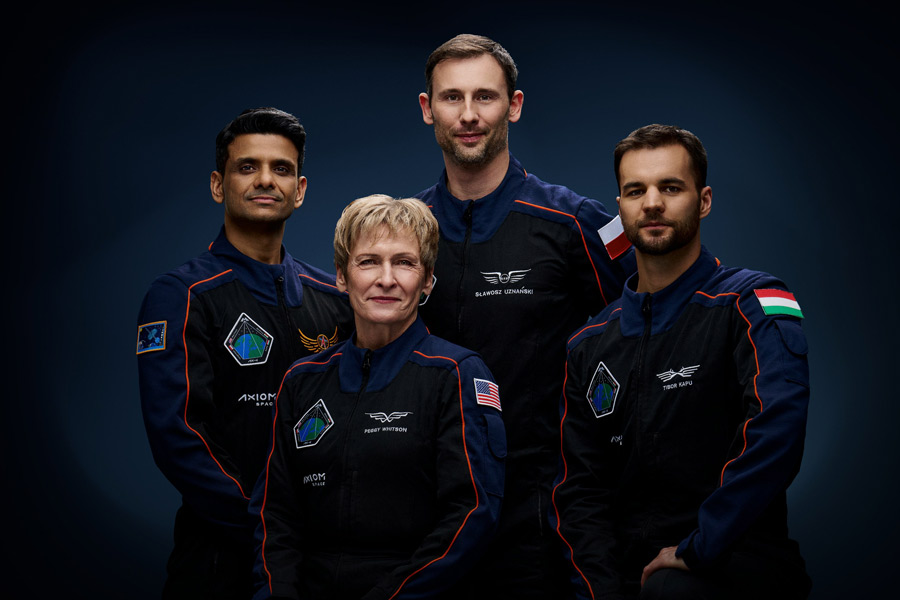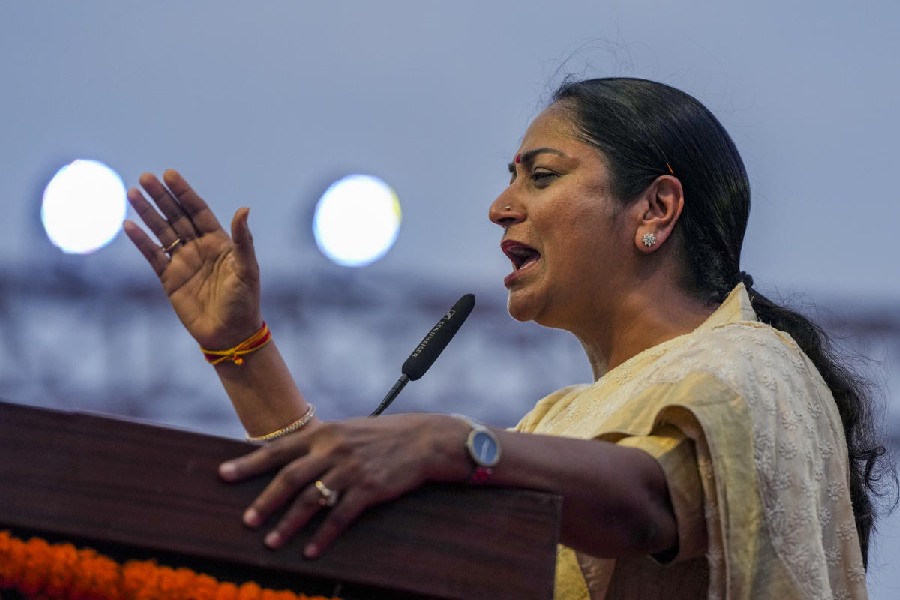 |
| Shahbag demonstrators at the rally on Thursday at Suhrawardy Udyan — formerly Race Course Maidan — to mark the 42nd anniversary of Sheikh Mujibur Rahman’s historic speech of March 7, 1971. The hoarding on the left features Mujibur Rahman. The smaller one on the right shows Pakistan Lt Gen. A.A.K. Niazi signing the instrument of surrender in the presence of Lt Gen. Jagjit Singh Aurora, then commander of the Indian and Bangladeshi forces in the eastern theatre |
Dhaka, March 7: Bodies bend at the waist and hands fling out in unison as they shout slogans; voices that recite poetry go hoarse and crack as they reach a crescendo because of the breath they take away.
Towering over the crowds is a photograph of the Bangabandhu taken at the moment he delivered the speech “rokto jokhon diyechi, rokto aaro debo...” (if we have sacrificed blood, we are willing to give more...) and ending with “this time our fight is for our liberation, this time it is for our Independence”.
Just behind it is a smaller hoarding of Pakistan’s Lt Gen. A.A.K Niazi signing the instrument of surrender to Lt Gen. Jagjit Singh Aurora, commander of Indian and Bangladesh forces in the eastern theatre on December 16, 1971.
The photograph marks the spot that is the Indian military’s finest moment. When Shahbag went to Suhrawardy Udyan today, the dust raised by many feet at Bangladesh’s National Memorial settled an argument: Shahbag is passionately political, there is nothing apolitical about it.
It has turned every symbol of Bangladesh’s nationalism into a political statement, using the 42nd anniversary of founding father Sheikh Mujibur Rahman’s March 7, 1971, clarion call that led to the Liberation War as a tool against the Jamaat-e-Islami and the Bangladesh Nationalist Party (BNP) that had called for a hartal.
In the sheer energy of the throngs that marched to Suhrawardy Udyan, formerly the Ramna Race Course Ground, the main Opposition BNP is in danger of seceding from the narrative of the creation of Bangladesh. Shahbag is achieving this despite the BNP’s founder and late President, Zia Ur Rahman, who broadcast on behalf of Sheikh Mujibur the Independence of Bangladesh.
As in every other national event since the Shahbag demonstrations began 31 days ago, the crowds are mostly peopled by youths who were born after 1971: Bangladesh’s demographic dividend. But they are not the only ones to demand the hanging of “war criminals”.
The crowd spreads out in an inverted ‘L’ from the “Eternal Flame” that was lit in March 1997 in the presence of Nelson Mandela, Yasser Arafat and former Turkish President Suleyman Demirel, to the dais.
Today, the park was black with people and red and green with flags. It was impossible to estimate a number. But when they sang the national anthem Amar Shonar Bangla, it was in near-perfect unison and the Tagore song could be heard kilometres away without the aid of loudspeakers. Unlike in India, they don’t freeze while singing the anthem here, they stand but they move and sway to the rhythm.
In a new concert for Bangladesh, more than a month into demonstrations, Shahbag is still insistent with its demand for justice — street-justice, some argue —and its discourse on nationality.
Among the faces in Suhrawardy Udyan this afternoon were the aged and the infirm, men with long and short beards, men in skullcaps, with hennaed hair and surma in their eyes, bald men, long-haired men, even men with rastafarian dreadlocks and ponytails.
Among the women, there are some clad in black burqa. Many of the women prefer a combination of red and green — the colours of the Bangladesh national flag — in their sarees and salwar-kameezes and, daringly for this country, in jeans. There are women with hair cut short, women with streaks of grey in their hair who have mobilised on the streets after decades.
Many stop at the sellers on the pavements of Shahbag nearby to buy red bindis and make a political statement with the beauty spot. They tie green bandannas with the red sun of their flag centred on the forehead. The woman reciting “how many rivers of blood must flow because you will arrive, Independence?” from the dais is in a sari, portly and middle-aged with a voice that is the stuff of melodramatic jatra.
It is a loud, raucous crowd. Even the revival of the “Joy Bangla” slogan has produced variations: the trade-unionish “Joy, Joy, Joy Bangla”, the full-throated “Joyeeeeeey Baaaaanglaaa”, and the staccato “Joy Bangla-Joy Bangla-Joy Bangla”. It is in everything and on everyone’s lips — in posters, on festoons, in the song of a youth who strums a guitar, in the song of another who has a take on a Baul number and in hymns.
The processionists announce their affiliations with banners: Jehangirnagar University, Agricultural College, Model University College, Sheikh Mujib Medical University, Siddheswari University College, Motijheel Gana Jagaran Manch, Dacca University Faculty of Arts.
It is this crowd that is a clear and present danger, not for just demanding the death and the banning of the Jamaat leaders. But also for the government of Sheikh Hasina Wajed for the memories they revive, one of them being a suicide attack on a crowd on March 7, 1999, in Udichi, Jessore, that left at least 10 killed.
There is departure in today’s gathering from the demonstrations since Shahbag erupted. A maulana prays in Arabic and a priest chants a sloka. Having been targeted by the Jamaat for being “irreligious” and “atheist”, the demonstrators of Shahbag are now trying to prove otherwise.
The first speech is — who else’s but Sheikh Mujibur’s — recited by a seven-year-old boy. “They will try to infiltrate us,” he says. “They will try to divide us Hindus and Muslims. It is your duty to protect your brethren.”










